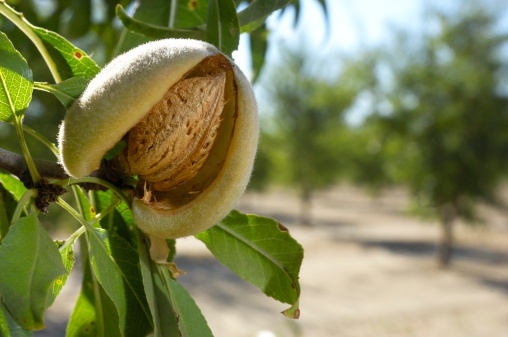California nut, burl (Walnut Californian, burl)
Botanical name: California black walnut (Latin Juglans californica var. Hindsii). It is a hybrid species from the Walnut family (lat. Fagales), of the order Bukotsvetnye (lat. Juglandaceae), class Magnoliopsida (lat. Magnoliopsida).
This type of nut can be divided into two types of nut. J. californica and J.hindsii. Both species are endemic to California. Hinds’ nut (Latin Juglans hindsii) is widely naturalized and is often also used as a root for walnut (Latin Juglans regia), with which it hybridizes easily.
The burl of the California nut (Walnut burl) is obtained as a result of inoculation of two related species (Latin Juglans regia x Juglans nigra). This is when a walnut or English nut (lat.Juglans regia) is grafted onto a black nut (lat.Juglans nigra) and a burl (growth) are formed at the grafting site, which is called a burl.
Growing area
The Californian nut is named for its place of origin. It is endemic to the state of California in the United States. It grows as part of mixed forests on the slopes and valleys of the California coast and the central part of the peninsula.
Some natural native specimens have survived in urban parks in Los Angeles, the Santa Monica Mountains and the Hollywood Mountains. The walnut forest is a highly fragmented and shrinking habitat.
Morphological description
It is a large tree growing up to 11-20 m in height. It has a single straight trunk, usually without branches, 9-12 m high from the ground. The crown is very spreading, maybe wider than the height of the tree. The trunk diameter at the base of the tree can reach up to 1.5-1.8 m. The trunk is dark gray-brown with deep grooves.
The leaves are large, pinnately complex, about 30 cm long, with 13-21-leaf blades 5-13 cm long with jagged edges. Unlike the Southern California nut, the vein corners are pubescent.
The plant is monoecious. Blooms from April to May. The flowers are yellowish-greenish, male, and female flowers are collected in separate inflorescences – a brush.
It has a small hard fruit – a nut 2.5-4 cm wide with a finely serrated thick shell that is difficult to remove, in the middle there is a small edible kernel.
Characteristics of wood
The heart color of the California Black Walnut can range from pale brown to chocolate brown with darker brown stripes. There is wood with a grayish, purple or reddish tone.
The sapwood is usually milky. Burl wood of hybrids grafted onto Juglans regia (English walnut) sometimes has a picturesque, striped surface near the graft, which is referred to as “marble king nut” (a variety of Claro walnut).
The grain is usually straight but may be irregular. It has a medium texture and moderate natural shine. It is considered to be very resistant to decay, although it is sometimes susceptible to attack by insects. The wood has a characteristic weak, soft odor. The wood is hard, durable, does not split. Specific weight – 640 kg / m3. Jahnke Hardness: 1,130 lb (5.030 N).
Application of California burl nut
Juglans hindsii wood, sometimes called Claro walnut, is used for furniture and firearms because of its good working properties (does not crack on kickback) and its beautiful grain structure.
The company Prime Tree Service offers tree planting, tree pruning, tree thinning, and felling services in Lodi. Its team of professionals take care of tree pruning and deforestation or stump removal operations.
It operates in the commercial, industrial, and residential sector and provides its customers with relevant recommendations, adapted to each type of land and trees.
Contact us today: (209) 297-3338
Continue reading about “California Buckeye (Aesculus californica): A Tree You Must Plant“

